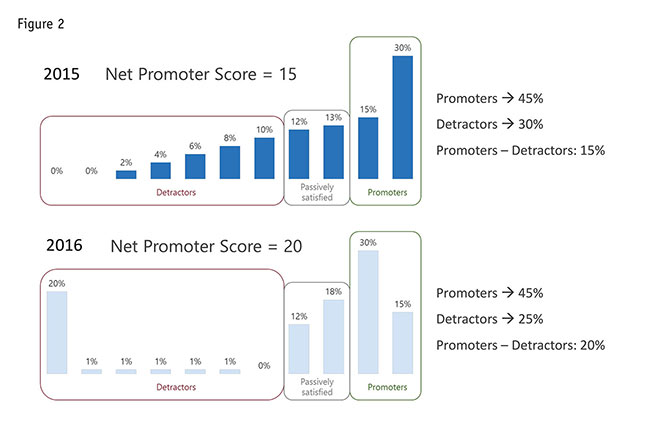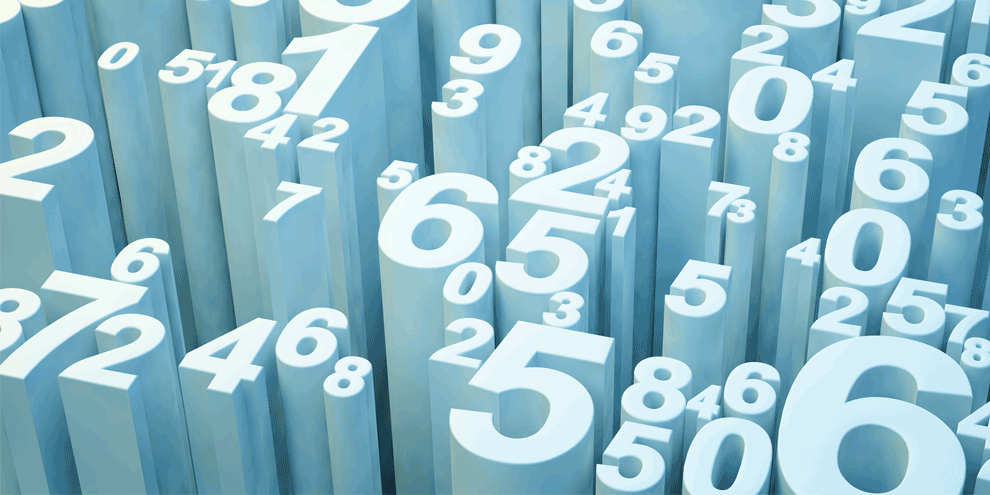Editor's note: Paul Abel is a managing partner in the Portland, Ore., office of Blue Research.
Over the past 10+ years, companies have appeared to be insecure. “Would you recommend us?” they constantly ask their customers. This trend has spread so far that cities, universities and even the Boy Scouts of America are asking this question. Following its introduction to the business world in 2003, it rose quickly to popularity, somewhat like Justin Bieber. However, just like “The Biebs,” its usefulness has been questioned, nobody seems to stop talking about it and yet deep down something does seem to be of value.
This question, of course, is used to calculate a Net Promoter Score (NPS). The three-sentence version of the NPS story is:
- Not long after the Harvard Business Review publishes Fred Reichheld’s article “The one number you need to grow” in 2003 the concept becomes a smash hit.
- The “one number” is calculated by taking the percent of people “highly likely,” minus the percent “unlikely” to recommend the company (yielding a Net Promoter Score).
- The claim is that by using this one simple question to manage its business a company can grow more quickly.
NPS has become a discussion in the boardroom, is being broadly used to measure and manage success and some companies even tie executive and employee compensation to achieving specific NPS targets.
The problem is, the claim that this score is correlated with growth is actually false. If anything, the companies that use this tool appear to grow more slowly.
As Justin Bieber might say, let’s take this one step at a time:
- What is NPS? The “one number” is captured by asking “How likely is it that you would recommend [Company X] to a friend or colleague on a scale of 0 to 10?” The resulting data are then aggregated into Promoters (scores of 9 and 10), Detractors (scores of 0-6) and Passives (scores of 7 and 8). By taking the percent of Promoters minus the percent of Detractors, voilà, you have the Net Promoter Score.
- Why did it become so popular? It seems logical; advocacy correlating with revenue makes sense. It seems credible; it was published in the Harvard Business Review and purported to be based on data. It is easy to monitor; it only requires one question to be asked and a single value can be easily communicated and used to manage performance.
- How do we know it doesn’t work? To test this claim, we conducted an experiment. We started with the companies that Bain and Company (a strong proponent of this tool) reports are using this metric. We selected all of those companies that are listed in the S&P 500. We then calculated the growth rate of all of those companies and compared those results with an equal number of companies randomly pulled from the S&P 500 (nearly 100 companies in total). What we found is opposite to what you’d expect: 62 percent of the companies reported to use the Net Promoter Score showed positive growth (2012 to 2015 CAGR). However, 68 percent of companies selected at random from the S&P 500 showed a positive growth over the same time period.
 Even so, tracking NPS scores can’t be bad, right? Wrong. It turns out that an increase in the percent of Promoters versus Detractors may suggest a company is improving, when in fact it is not. At the risk of delving too deep into the numbers, consider just one example (Figures 1 and 2). The company’s NPS increased by five points (from 15 to 20) between 2015 and 2016. This gain might be considered a success. However, looking at the data, the 15-point NPS score reflects a better position with customers than when the company increased to a 20-point NPS score.
Even so, tracking NPS scores can’t be bad, right? Wrong. It turns out that an increase in the percent of Promoters versus Detractors may suggest a company is improving, when in fact it is not. At the risk of delving too deep into the numbers, consider just one example (Figures 1 and 2). The company’s NPS increased by five points (from 15 to 20) between 2015 and 2016. This gain might be considered a success. However, looking at the data, the 15-point NPS score reflects a better position with customers than when the company increased to a 20-point NPS score. What, then, is the real value of NPS? From a business perspective, if designed well, implemented effectively and interpreted appropriately, NPS can have merits: it can provide a measure of customer sentiment; it can encourage an external customer focus; and it can stimulate conversations.
What, then, is the real value of NPS? From a business perspective, if designed well, implemented effectively and interpreted appropriately, NPS can have merits: it can provide a measure of customer sentiment; it can encourage an external customer focus; and it can stimulate conversations.
Similar to Justin Bieber, NPS is not for everyone. For businesses, even if you are a fan and have adopted a process to measure NPS, looking deeper is vital. Asking one “magic” question may seem enticing and can give one point of reference. However linking employee compensation to an NPS is ill-advised. When listening to customers, rely on a variety of questions and focus on attributes that customers find most important in selecting the product or service you offer; “recommendation” is likely to be part of it but unlikely to be the only part.
